A much discussed topic: cow’s milk vs. plant-based milk. In this post I want to talk about milk and its substitutes, my personal thoughts about this topic and my preferences. I will also share my favorite oat milk recipe with you, which you can prepare easily at home within 10 minutes. A healthy diet doesn’t have to be expensive. ♥️
Part 1: Cow’s Milk
I assume that we all remember this scenery as children: Our mom running after us with a glass of cow’s milk in her hand – and that’s for a reason! Cow’s milk contains about 87% water and is rich in protein (3,4g/100ml), essential amino acids, vitamins and important minerals like calcium (120mg/100ml). Even though it is a nutrient-dense liquid, it is questionable if dairy products are really designed for our human bodies.
Previously pregnant mammals produce milk in order to feed their young. It is totally natural and necessary for their growth in infancy to consume the mother’s milk. After the young have grown up, they don’t need the milk with the high nourishment anymore and in nature there is no species that drinks milk past infancy – except humans. Humans are the only species that drink milk past infancy + from other species. Sounds weird to me. In nature there is actually a simple rule: not your mama, not your milk. So why do humans drink milk of a mother cow and allow their hormones to get into our bodies? That’s a biiiiig question. In my opinion a mother cow’s milk is designed for her calves and the hormones it contains are not supposed to get into our human bodies. But you have to decide on your own.
There are also some ethical concerns about modern dairy farming practices. A calf needs approx. 5-8 litres of milk each day, so in a natural way a mother cow would be originally able to provide 10 litres of milk a day. Nowadays, as an impact of industrialization, a cow can provide up to 50 litres of milk every day. Can you see the huge difference? Another important fact is that the cows need to give birth to calves to be able to produce that milk. The cows become artificially inseminated and are therefore almost non-stop pregnant. The calves are taken from their mamas of course, so that the milk can be processed for humans. Cows give birth at this pace for about 4-5 years and are then slaughtered. Only that we have the opportunity to drink animal milk, other beings in nature are treated that way. In my opinion it is a cruel dairy farming practice.
Another important concern: the environment. Compared with the production of plant-based milk, dairy milk needs higher amounts of water and land and generates a higher amount of greenhouse gases. But let me tell you that the vegan substitutes are not always more eco-friendly than dairy milk. In Brazil, rainforests are being destroyed in order to plant soybean. So I would recommend to do a research on how your milk is produced, if you don’t want to support deforestation.
Part 2: Plant-based Milk & My Preferences
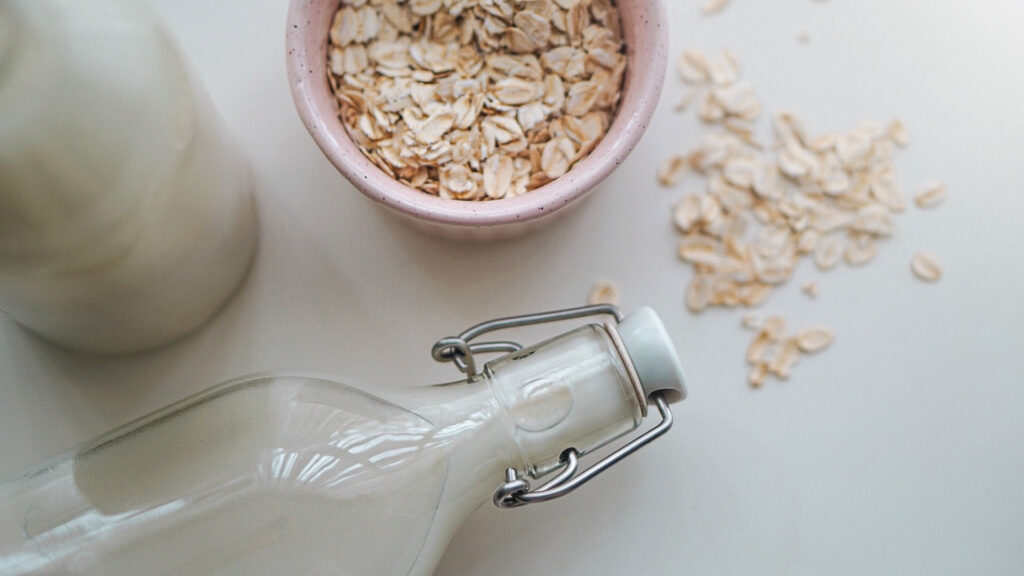
A substitute for cow’s milk is plant-based milk. Those milk alternatives are not as rich in nutrients as cow’s milk, but are fine for people with lactose intolerance and a milk allergy. Lactose intolerance is a digestive disorder caused by the inability to digest lactose, the main carbohydrate in dairy products. People with lactose intolerance don’t make enough of the enzyme lactase, which is needed to digest lactose. This can cause symptoms like bloating and abdominal cramps. If you suffer from these symptoms, you can give the vegan alternatives a try.
Which milk do I prefer? I consume plant-based milk for a long time now. The main reason for my choice is that dairy milk causes bloating whenever I consume it. As far as that is concerned, I am not strict in my consumption; but I try to avoid cow’s milk in my recipes and consume only a minimum of dairy products. There are also some ethical concerns for my choice as I stated above. In my opinion, cow’s milk is designed for calves only, and not for humans. I am not okay with the fact that the hormones of a cow get into my body. Moreover, plant-based milk tastes way better to me and I feel happy with such a diet. ♥️
Part 3: Milk Alternatives
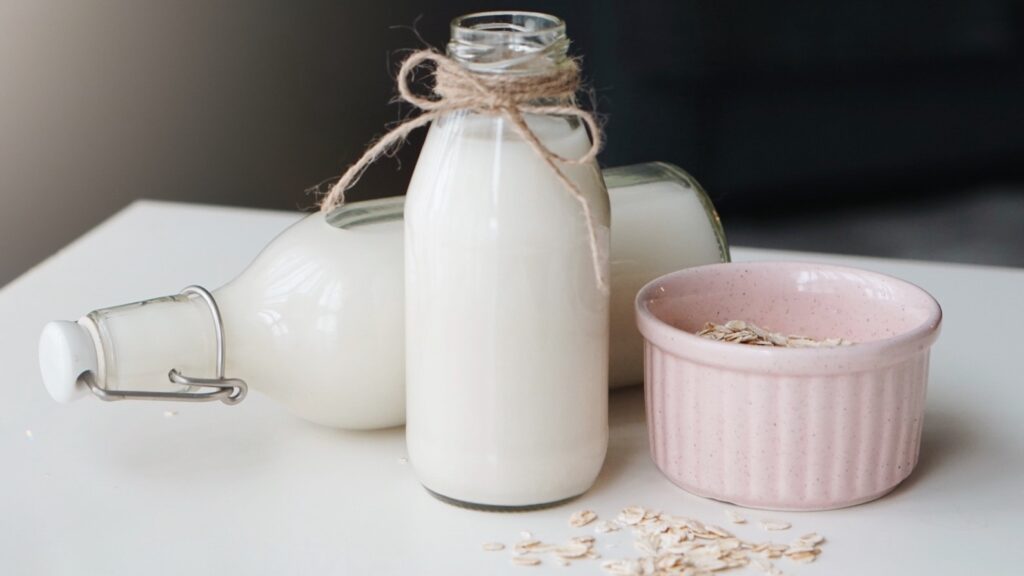
Almond Milk: One of the most common dairy-free milk alternatives. It tastes neutral; not too sweet and not too insipid – you can taste a slight marzipan flavor.
Soy Milk: It’s the milk substitute which contains the highest amount of protein (3,3g/100ml).
Oat Milk: Has a sweetish taste and is one of my favorites. I love to cook my porridge with homemade oat milk. 😍
Coconut Milk: It tastes nutty/exotic and is available in a creamy, thick version (high fat content) and as a lighter, fat-free coconut drink.
Hazelnut Milk: I love hazelnut milk in warm drinks such as coffee, hot chocolate and matcha. With its nutty taste it peps up every drink – yum!
Rice Milk: Probably the sweetest milk alternative and it is gluten-free. You can consider rice milk for your desserts.
Hemp Milk: Rich in omega-3 fatty acids, it is not as commonly found in supermarkets yet. But I think that it’ll be a star in the near future.
Which one to choose? I think there is nothing wrong with consuming them alternately, so that you get all of those important nutrients and have a balanced diet. ♥️
Part 4: My Oat Milk Recipe
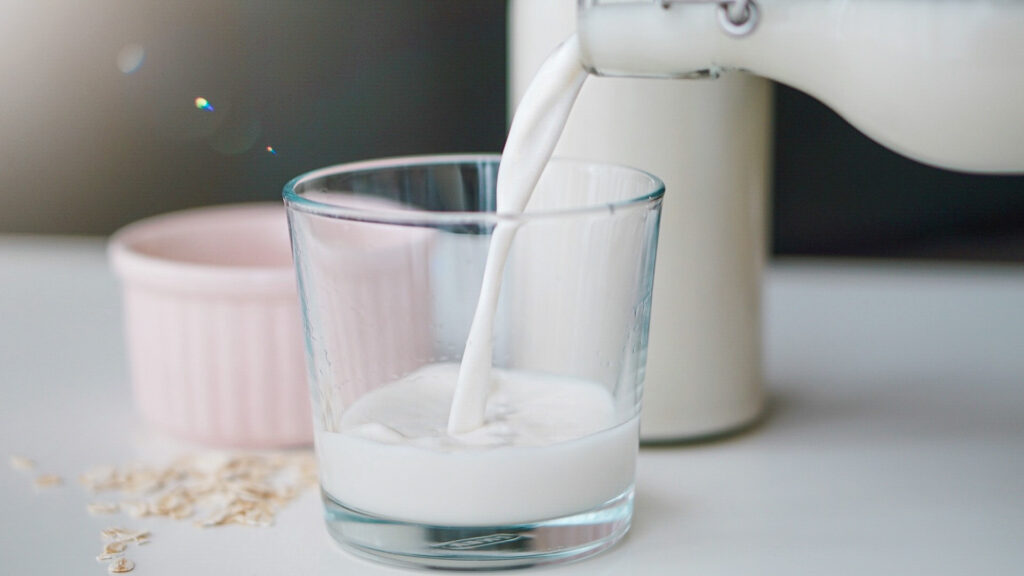
For some, plant-based milk may be more expensive than dairy milk, but a healthy diet doesn’t have to be expensive. ♥️ You can prepare 1 litre of oat milk easily at home within 10 minutes and it will cost you only a few cents.
Ingredients:
• 80g rolled oats (preferably gluten-free)
• 1 litre cold water
• 1-2 tsp agave syrup or any other sweeteners (optional)
• pinch of salt
Equipment:
• Blender
• Nut milk bag or a thin, tightly woven towel
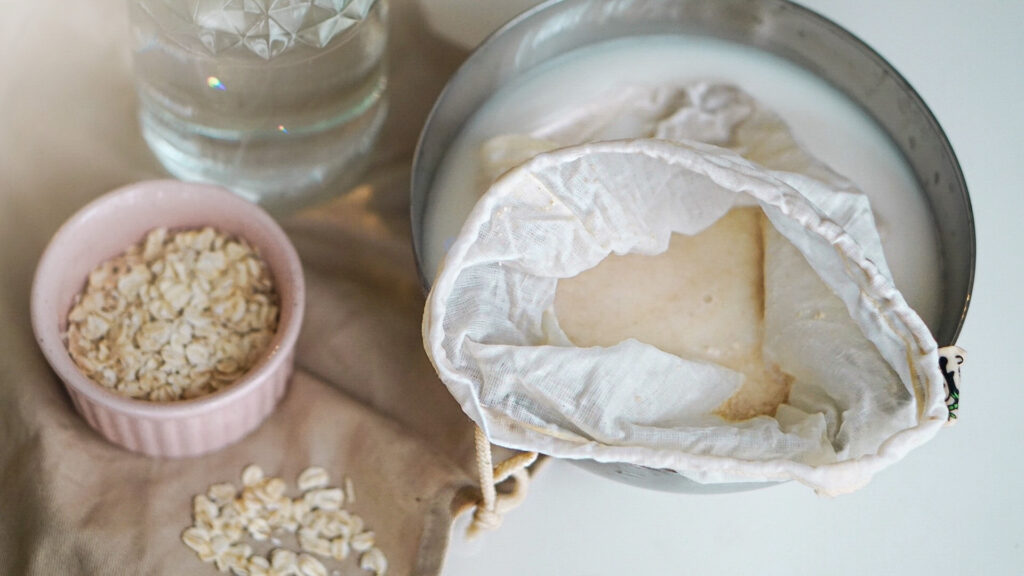
Information: In some recipes it is instructed that you have to soak the oats in water overnight. But if you do so, the consistency of your oat milk will get slimy. I would recommend to not soak the oats in water before. There are also some other tricks which will make the result super smooth and not slimy – I will explain.
Instruction with some secret tricks:
1. Add the oats, water, salt and any additional sweeteners to a high powered blender and blend for 20 seconds. It is important that you don’t over-blend the mixture. If you do so, the ingredients start to warm and you’ll get a slimy consistency. 20-25 seconds of blending are totally enough.
2. Pour the mixture through a nut milk bag or a thin towel over a large mixing bowl. In order to reduce the slime-factor, don’t over-squeeze. If you squeeze too firmly you’ll get out more of the starchy compounds of the mixture, so be gentle.
3. Our super smooth milk is ready! Transfer the milk to a sealed container and store it in the fridge.
You can consume your oat milk for up to 4 days. The milk will separate in the fridge, that’s normal. Just give it a good stir before drinking and if you like the texture best when the pulp is settled at the bottom, you can consume it without shaking as well. Bon appetit! 🙂
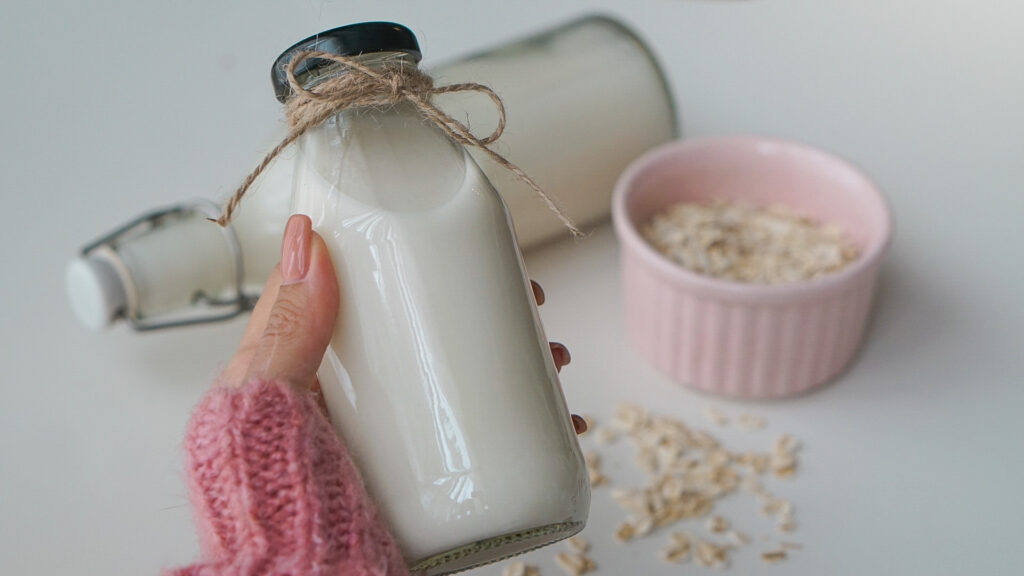
Which milk do you prefer – animal milk or plant-based milk? Chat with me down below in the comments and tell me your preferences and reasons for your choice. If you try out my recipe, I would be more than happy to receive stories on Instagram showing your super smooth and delicious oat milk. 😍
Stay healthy.♥️
Eylem
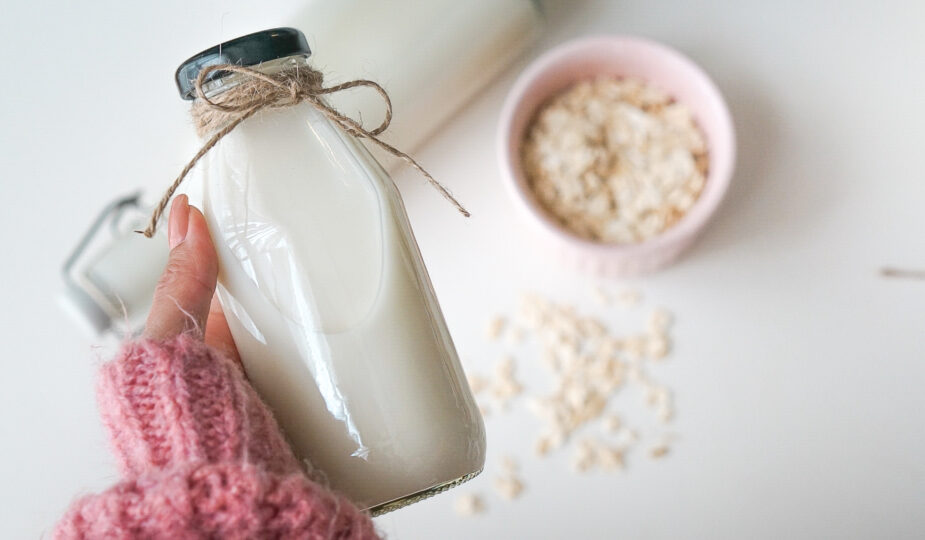



Hemen deniyorummm😍😋
Çook mutlu oldum, bizimle bu tarifi paylaştığın için. Teşekkürler Eylem 💓Bende inek sütü içemiyorum. Bir hayvanın yavrusu için ürettiği sütü nasıl içeyim ki, bana biraz ters 🙄 Markette bitikisel sütler gerçekten çok pahalı, bu tarifini hemen deneyeceğim 🙌🏻
Yine çok güzel anlatmışsın her söylediğin sözde,yazıda senden bir şey daha öğreniyorum çok teşekkürler iyi ki varsın😍❤️
Çok enteresan. Daha önce asla bir ineğin, içinde yavrunun kendini besleyecek duruma gelinceye kadar almak zorunda olduğu besin maddelerini bulunduran sıvıyla birlikte süt vermediğini duymamıştım. Tüm bakış açım birdenbire değişti. Teşekkürler. Vaktini bize ayırıp Bilgi dolu blog post yazdığın için ayrıca teşekkürler 🤍
Her yazında daha fazla bilgileniyoruz♡ Ben bitkisel sütlerin fiyatı yüksek olduğundan dolayı genelde inek sütü kullanıyordum. Fakat bu tarifin bizim için kurtarıcı oldu. :)♡
Kesinlikle hemen deneyeceğim. Teşekkürleer♡♡♡
Harikasın
İlk kez bitkisel sut denedim senin sayende ve gerçekten çok beğendim çok sağ ol 💓
inek sütü beni de çok şişiriyor ama kolay ulaşım ve fiyatı dolayısıyla daha çok tercih ediliyor. bu sütü deneyeceğim.
badem sütü yapıyor musun ? tarifini isteriz yapıyorsan 🙂
emeğine sağlık teşekkürler
Mutlaka denemek istiyorum!!♡ Normalde daha uygun olduğu için inek sütü tercih ediyordum ama yulaf sütü de aynı maliyette mutlaka denicem😌🤩 Ama eylem yulaf lapası yaparken yulaf sütü kullanmak nasıl olurr bilemedim sence olur muu😊❤
Yaa ne güzel anlatmışsın deneyeceğim ❤️🙏🏻